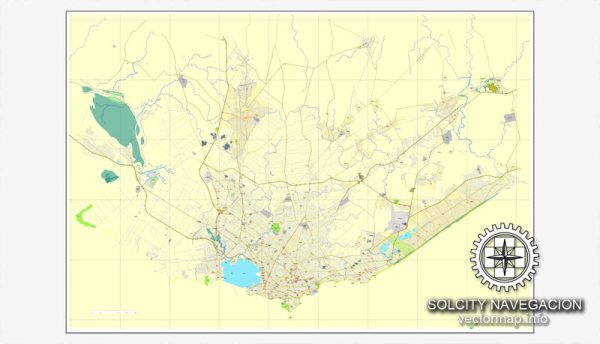Montevideo is the capital and largest city of Uruguay, a country located in South America. Its history is rich and diverse, reflecting the broader historical context of the region. Here’s a brief description of Montevideo’s history:
- Pre-Colonial Period: Before the arrival of European settlers, the region that is now Uruguay, including Montevideo, was inhabited by indigenous peoples, primarily the Charrúa and the Guarani. They lived as semi-nomadic hunter-gatherers and engaged in agriculture.
- Portuguese and Spanish Exploration: Montevideo’s history as a city began with the arrival of Spanish and Portuguese explorers in the early 16th century. The Spanish established the settlement of Montevideo in the late 1720s as a strategic outpost in the struggle for control of the River Plate (Río de la Plata) region. The city’s name is derived from the Portuguese words “Monte” (hill) and “Vídeo” (I see) due to its distinctive geography of rolling hills.
- Colonial Era: Montevideo was part of the Spanish Viceroyalty of Peru and later the Viceroyalty of the Río de la Plata. During the colonial period, it grew as a trading and smuggling port. The city’s population was a mix of European colonists, indigenous people, and African slaves.
- Independence: Montevideo played a significant role in the fight for independence from Spain. It changed hands several times between Spanish and revolutionary forces. In 1811, the city declared its independence from Spain and later joined the United Provinces of Central America, which would later become Argentina. However, it was not until 1828 that Uruguay achieved full independence from Brazil, with Montevideo as its capital.
- 19th Century: The 19th century was marked by political turmoil, conflicts with neighboring countries, and civil wars, with Montevideo often at the center of these events. The city became known as the “City of Freedom” for its commitment to a liberal and democratic government.
- Economic Growth: Montevideo’s economy began to flourish in the late 19th and early 20th centuries, primarily driven by livestock farming and exports. The city experienced a population boom as European immigrants, primarily from Spain and Italy, settled in the region.
- 20th Century: Montevideo continued to develop as an industrial and cultural hub during the 20th century. It was known for its thriving port, cultural institutions, and political stability in contrast to some of its neighboring countries.
- Modern Era: In the latter half of the 20th century, Uruguay faced political instability, military dictatorships, and economic challenges. Montevideo, like the rest of the country, was not immune to these issues. However, Uruguay has since regained political stability and democratic governance.
Today, Montevideo is a vibrant, cosmopolitan city with a rich cultural scene, beautiful beaches, and a well-preserved historic district. It remains the political, economic, and cultural center of Uruguay, offering a unique blend of historical heritage and modern living.


 Author: Kirill Shrayber, Ph.D.
Author: Kirill Shrayber, Ph.D.